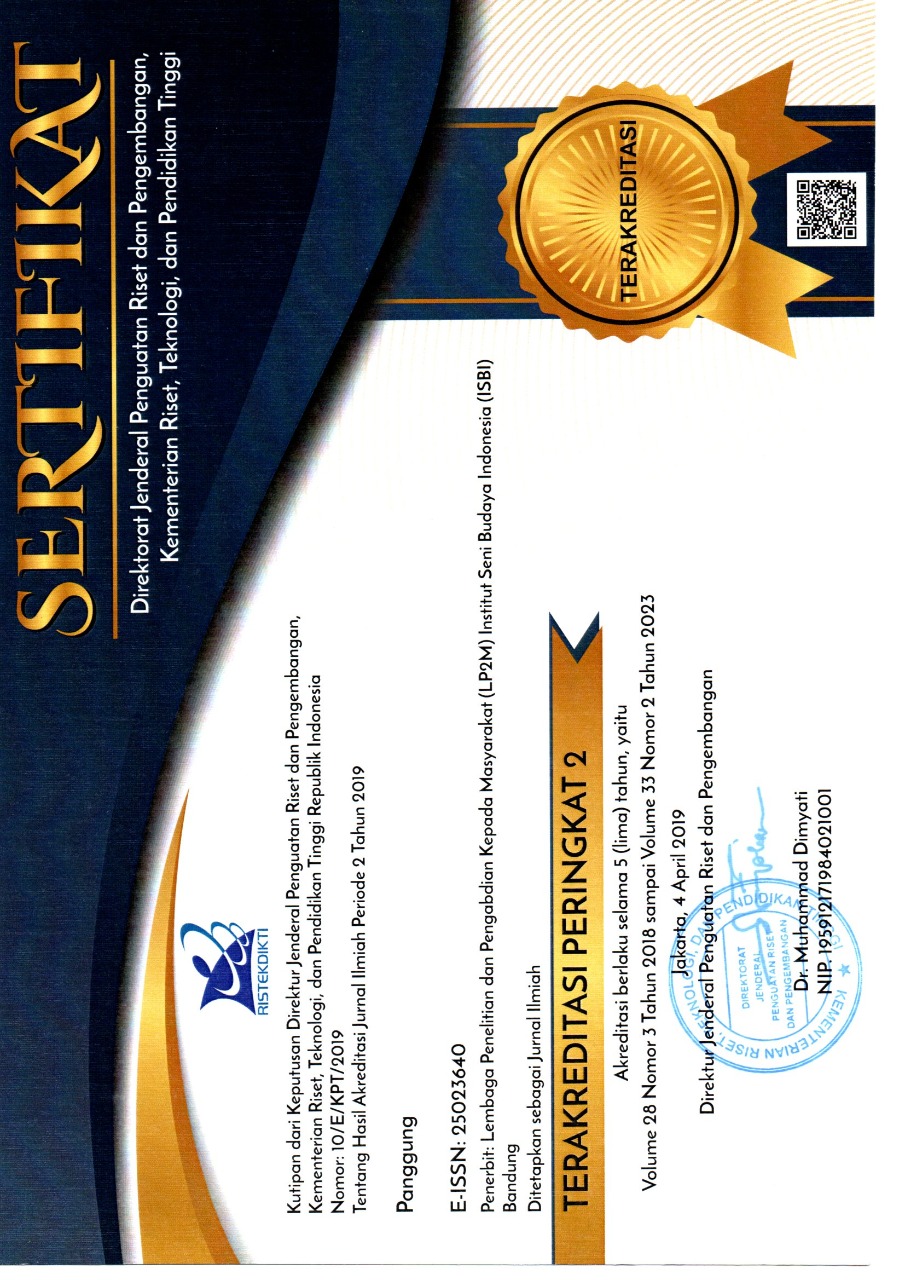Pengaruh Model Pembelajaran dan Kemampuan Gerak Tari Terhadap Kecerdasan Emosional Anak Usia Dini
Abstract
ABSTRACT
Â
The objectives and targets in this study was to determine the effect of learning models and the ability dance movement toward early childhood emotional intelligence. Emotional intelligence is the ability to recognize emotions, managing emotions, motivating oneself, recognizing emotions of others (empathy) and the ability to build relationships (cooperation) with other people. The research method used in this study is the experimental method. In the experiment, there are two groups of subjects namely experimental group and control group. Because the research hypothesis is the hypothesis of interaction, then the most appropriate design is factorial desig;n, factorial design used was 2 x 2 fac- torial design. Treatment variable is the learning model, are considered to be a model student center and a teacher center, while the variable attribute is the ability to dance, dance movement capabilities are classified into high and low dance movement. The results showed that there are significant learn- ing model and the ability to dance on the emotional intelligence of young children. The implications obtained in this study that the experience of dance movement with a model of student learning center is an important cornerstone in the development of emotional intelligence since early childhood. Based on the best learning implications Art Culture and Skills should give students experience in dance movement. With that in mind, the potential students will be able to develop optimally.
Â
Kata Kunci: Learning model, dance movement, and emotional intelligence
Â
Full Text:
PDFReferences
DAFTAR PUSTAKA
Arends, Richard I.
Learning to Teach. Terj. Helly Pra- jitno. Yogyakarta: Pustaka Belajar.
Arnold, Robin.
Body Atlas. Australia: The Five Mi- le Press.
Ary, Donald, Lucy Cheser Jacobs and Ash- gar Razavieh.
Introduction to Research in Educati- on. fort worth: TX. Harcourt Brace College Pubhlisers.
Ayres, A.J.
Sensory Integration and The Child.
Los Angeles: Western Psychologi- cal Service.
Bagong Kussudiardjo
Tentang Tari. Yogyakarta: Nur Cah- ya.
Eggen Paul.D. and Kauchack
Strategies for Teachers Teaching Con- tent and Thinking Skills. Boston: Al- lyn and Bacon.
Gallahue, David L. and John C. Ozmun.
Understanding Motor Development.
USA: The McGraw-Hill Compa- nies.
Gardner, Howard
Frames of Mind. New York: Basic
Book Publication.
---------------,
Multiple Intelegences. Terj. Alexan- der Sindoro. Jakarta: Interaksara.
Goleman, Daniel
Emotional intelligence. Terj. Herma- ya. Jakarta : PT.Gramedia.
Hainstock, Elizabeth G.
Metode Pengajaran Montessori untuk Anak Sekolah Dasar. Terj. Hermes. Jakarta: Pustaka Delapratasa.
Lily Djokosetio Sidiarto
Perkembangan Otak dan Kesulitan
Belajar pada Anak. Jakarta: UI Press.
Salkind, Neil J.
An Introduction to theories of Human Development. Terj. M. Khozim. Bandung: Nusa Media.
Solso, Robert L, Otto H.Maclin, M.Kimberly
Maclin.
Cognitive Psichology. Terj. Mikael
Rahardanto. Jakarta: Erlangga.
Warner, Laverne and Judith Sower
Educating Young Children From Pre- school Through Primary Grade. Bos- ton, USA: Paerson Education, Inc.
Sumber Lain:
Undang-Undang RI No. 20 Tahun 2003 tentang: Sistem Pendidikan Nasional/SIS- DIKNAS. Jakarta: BP. Cipta Jaya.
DOI: http://dx.doi.org/10.26742/panggung.v22i2.63
Refbacks
- There are currently no refbacks.
Statistik Pengunjung Jurnal Panggung
Jurnal ini terlisensi oleh Creative Commons Attribution-ShareAlike 4.0 International License.
Editor Office:
Lembaga Penelitian dan Pengabdian Kepada Masyarakat (LP2M)
Institut Seni Budaya Indonesia (ISBI) Bandung Gedung Rektorat Lantai 4
Jl. Buah Batu No. 212 Bandung 40116
Email: penerbitan@isbi.ac.id or redaksi.panggung@gmail.com
Phone: 022 7314982 Fax: +022 7303021













